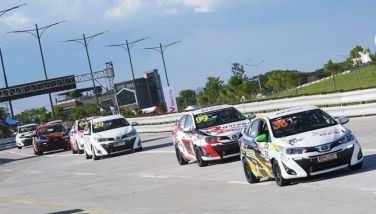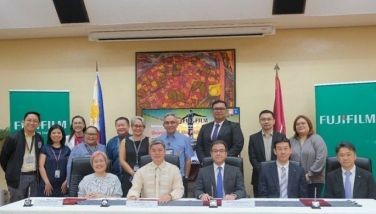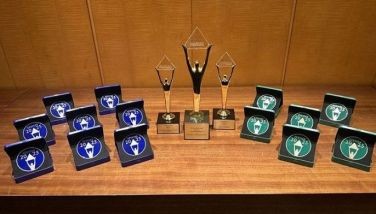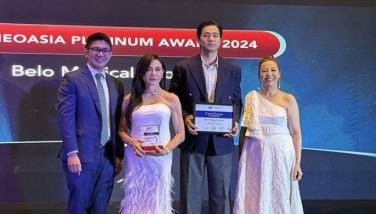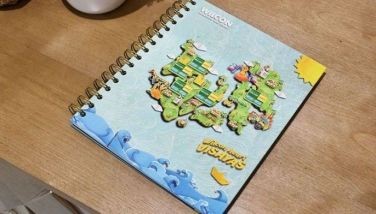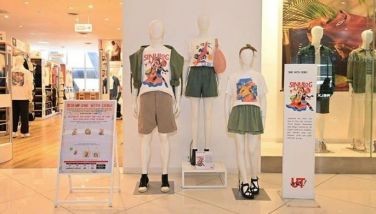The heart of Sabah
CEBU, Philippines – Compared to a decade ago, travelling to another country has now become much easier. With the advent of the internet and credit cards, reservations and information are literally at our fingertips. This is how my two friends and I made our trip to Malaysia - well, actually with a couple of months’ preparation.
Online research led to securing tickets that were on sale. Further online research guided us in drafting our itinerary. We wanted to stay in the cheapest accommodation for the first few days since we'd only need a place to sleep in and stay somewhere classy on our last night. Next, we were on a late afternoon flight from Cebu to Kota Kinabalu, Malaysia.
Malaysia is an archipelago, like the Philippines. History has it that part of Malaysia was formerly owned by Brunei. This part was Sabah, whose present capital city is Kota Kinabalu. We planned to taste the local food, have a feel of the life of the people in this neighboring country and give ourselves a few days of pure relaxation.
On arrival, we found the time zone and weather condition very similar to our country, and realized we had a few minutes free before nightfall to go around and explore the city. The big question was how. We had missed to research about local transportation. Yes, taking a cab was an option - but we didn't even have local money yet. By the way, the cabs were not metered; they had some kind of fixed fare system, and cars in Sabah were all right-hand drives.
The money exchange kiosk at the airport offered a low rate. Later we would learn that it was better to exchange money at a mall called Centre Point Sabah.
Travel time from the airport to the city was around twenty minutes. The city streets we passed by were lined with manicured bougainvillea in beautiful colors. Pedestrians were noticeably scarce or absent. And they didn't seem to have rush-hour traffic there.
Then, we checked in at the Lavender Lodge, since our previous online research revealed that it had better accommodation compared to other motels around the city. The staff was very accommodating - they were all Filipinos! Shortly after getting settled in our room, our tummies hinted it was dinner time.
The guy at the front desk directed us to the Sri Melaka restaurant, just three doors away from the lodge. He was right, the food there was delicious and the price reasonable. We had Chicken with Cashew Nuts and Asam Fish. The latter was similar to the Filipino 'sinigang', only very spicy and the soup darker. Actually, most local dishes were spicy.
The next day was quite a busy one. We visited the Desa Farm, Kota Kinabalu National Park, Signal Hill Observatory Tower and the City Mosque, and were lucky to find a cab driver at the bus station who agreed to drive us around for the whole day. He spoke better English at least and knew where to take tourists to.
We started at the farthest destination - the Desa Farm, so-called the New Zealand of Malaysia, which supplies the city with fresh cow's milk, among other dairy products. The farm is located in the high mountains, approximately two hours from the city. We sampled their ice cream before heading back to the city. It was drizzling when we started down from Desa. The weather in the mountainous part of Kota Kinabalu is very unpredictable. It can go from cloudy to sunny then to rainy within an hour.
Unfortunately, the rain was already pouring hard when we reached the Kota Kinabalu National Park, the spot where climbers assemble to start their trek to the majestic Mount Kinabalu. We waited a while for the rain to stop; and when it finally did, the breathtaking Mount Kinabalu revealed itself in all its glory.
For lunch that day, we tried the 'wild ball'. Our driver said most tourists loved it. All the more we got curious what the dish was like. At an eatery with a big roasting pit on one side of the house, the meat cooking on the grill looked like pork. It was wild boar meat! The taste? I can't say I loved it; it's probably an acquired taste.
Our next stop was at the Signal Hill Observatory Tower, an elevated point where visitors can supposedly see the whole city. But it was only around 75 percent of the city I think we saw.
Most memorable was the visit to the City Mosque. It was my first time to be in a mosque. The whole structure was surrounded by water, reminding me of Taj Majal. Tourists had to be properly dressed in going inside. I was sweating profusely in the rented traditional Muslim dress but seeing the inside of the mosque was worth it.
The mosque could accommodate hundreds all at once. The floor was covered with carpets of different colors and designs. They were so soft on my soles that I suspected, this is exactly the reason they insisted we leave our footwear outside.
Our third day was culture day. We visited the Mari-Mari Cultural Village. We had no idea what to expect as we did not come across this attraction during our prior research.
Mari-Mari means 'come' in English, an invitation into the five houses that represent the five major tribes of Malaysia: Rungus, Lundayeh, Dusun, Murut and Bajau. Visitors are divided into groups of around twenty people, under one tour guide.
The Dusun Tribe is a farming tribe. A common addition to a Dusun house is a kamalig-looking wooden building with an elevated floor, where the Tangkob is kept. A Tangkob is a round wooden container for the newly harvested rice grain. This tribe is also well known for rice wine.
The Rungus Tribe is well-known for producing honey. They use bamboo tubes, around two feet long with a little hole on one end. A part of the beehive is placed at the hole to attract the bees, and the bamboo tubes are hanged at the surrounding trees. At harvest time, the bamboo tubes are split open and the honey collected.
The Lundayeh Tribe is known for an interesting feature of their long houses - the roof that can be raised to allow air inside during the hot season. Long houses are quite common with the different tribes in Malaysia. Often, one house accommodates a whole tribe, with one room assigned to one family. A new room is added to the long house each time a new family is formed.
Badjaos from the Philippines have also become a significant group in Sabah. These seafaring Filipinos originally traded with the people of the island and have eventually decided to settle there. The Bajau Tribe has a popular sweet treat, the Kuih Jala. It is made from wet rice flour poured through a strainer into the pan of boiling oil. The result resembles a small net-like triangle that tastes like the Cebuano 'ampaw'.
The Murut people are considered an aggressive lot, known to be head hunters who like to display the cut heads of their enemies in their houses as a sign of bravery. Their most lethal weapon is the 'sumpit', a long tube-like contraption into which a sharp pin-size bamboo stick coated with poison is inserted and used as bullet. A quick blow of air from the mouth sends the bullet to hit the target and immobilizes him.
At sunset we headed to Tanjung Aru beach. Many tourists were already there when we arrived - mostly Asians. Establishments offering refreshments and meals lined the beachfront. The sand felt almost like cotton, so soft that you'd forget what flip flops are for. The soft sand under our feet, cool breeze on our skin and the sight of a golden sunset on the horizon was such a refreshing and calming ritual to end the day.
The fourth day was our last hurrah. We had been looking forward to Gaya Island, where the Gayana Eco Resort is located. We had made prior reservation at the resort, and they arranged for our boat ride to the island, which took 30 minutes. The resort staff welcomed us warmly - and it felt like we had the whole island to ourselves.
We were then escorted to our villa, which was right on the water itself so the sound of the waves can lull guests to sleep. The place was like a beautiful fishing neighborhood; the walkways lined with bougainvillea.
We first visited the Marine Ecology Research Center on the island, a facility devoted to marine preservation and rehabilitation. The big aquariums displayed several species of marine flora and fauna. We got to help plant damaged corals into pots that would then be brought to the sea when the corals are ready.
We also joined in the fish feeding, which was a regular morning activity at the resort. Fish of different colors and sizes came. We even took advantage of the lively fish gathering and swam with them. In the afternoon, we had fun kayaking around the resort.
Then, it was time to leave. We left the island and headed back to the city - and then back to our usual realities.
- Latest













